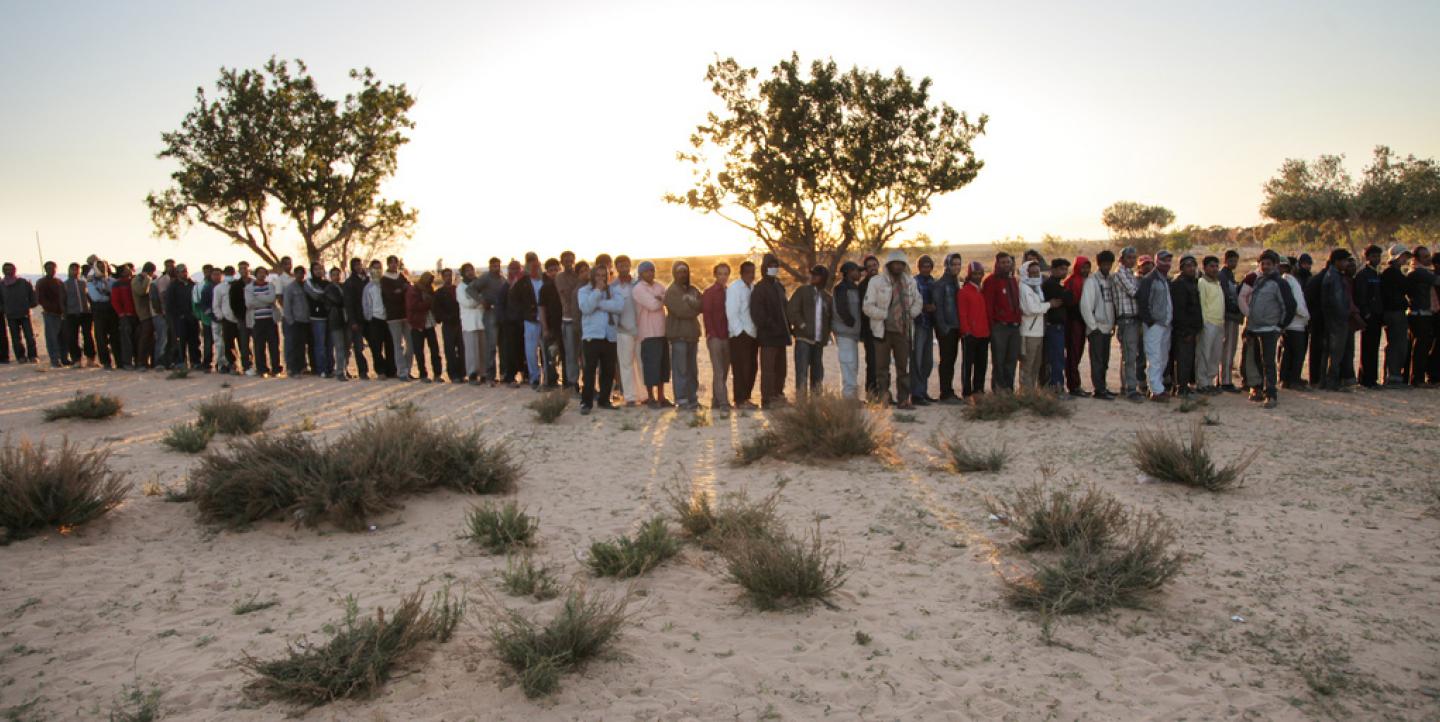The world is facing the worst refugee crisis since World War II. A record 60 million people are on the run from violence-plagued regions in Asia, Africa and the Middle East, according to the United Nations, with no end in sight.
Are journalists prepared to cover victims and survivors of some of the most horrific violence in the 21st century? The challenges are great.
How does a reporter ask people reeling from horror, shock and fear to recount their ordeal? Is there a best way to approach those who have survived traumatic violence? What is the logic for intruding on private pain?
I contemplated those questions in June 1999 as I sat in a tent with Kosovars who had risked treacherous mountain passes to escape marauding Serbian soldiers. They found safety across the border in Blace, Macedonia, where thousands were registered, fed and sheltered.
I agonized about how to conduct interviews without re-traumatizing them. How much detail should I push for about the brutality they witnessed? If they wept, should I stop? What comfort could I offer? I was guided by the maxim, “Most of all, do no harm.”
Over two days, I listened to accounts of villages set ablaze, the rape of local women and widespread executions. At times, I cried with them and salved my conscience by offering bags of nuts, tea and dried figs.
At Blace, I watched in disbelief as a reporter walked up to a group of young female refugees and asked: “Anybody in your village been raped?” They dissolved into tears and fled. Bad practices can do great harm.
What follows are best practices for interviewing victims and survivors of violence from the Dart Center for Journalism and Trauma, the European Federation of Journalists (EFJ) and other experts.
In February, the Dart Center posted tips on covering the refugee crisis, including interviewing techniques from British psychologist Katy Robjant, who works with survivors of human rights violations, and four journalists experienced on the topic.
Robjant stressed the importance of recognizing signs of traumatization.
“If they start to cry, if their breathing quickens, or if you notice they’re looking at the door or around the room, it might be a sign that they don’t feel safe — or that what you are talking about is reminding them of the trauma in a negative way,” said Robjant. “You have to take a step back and ask them if they are okay to continue the interview, or if you can do anything to make them feel safer.”
She urges journalists to “make every effort” to give control to interviewees by making it clear that they don’t have to answer questions and can end the interview at any time.
In the Dart article, Raniah Salloum, political editor for Germany’s Spiegel Online, advises reporters to “See people, not ‘refugees.’ Work with empathy and respect, not with pity and condescension.”
Along those same lines, in a December 2015 blog, EFJ stressed the importance of sharing human feelings during interviews. The payback: “The quality of information depends on your ability to develop trust.”
A guidebook, “Covering Trauma,” produced by Radio for Peacebuilding Africa, offers comprehensive advice for understanding the effects of trauma and provides interviewing tips. Here is a sampling:
“Trauma happens to people without their permission. Responsible journalism should make certain, at every stage of reporting and writing the story, that survivors are giving their permission freely. No one should feel bullied into an interview.”
“Don’t start with hard questions. Ask trauma survivors about themselves and get some sense of their lives before asking about their most vulnerable moment. If you are interviewing the survivor of a village massacre, you might start by saying, ‘Tell me about your village before the violence came.’ This will help put them at ease.”
A final thought: I have conducted workshops on interviewing victims of violence and written about the topic for the ICFJ manual “Disaster and Crisis coverage.” One of my best tips: Never ask “How do you feel?” Never say, “I know what you must be feeling.”
Simply introduce yourself and let them know, “I am so sorry for your loss” or “I am sorry for what you are going through.” Reliving trauma takes a toll. Tell victims how much you appreciate their willingness to share their stories.
Kindness and simple acts of generosity, offering a bottle of water or helping to carry a heavy bundle, will go a long way to building trust among this vulnerable population.
Main image CC-licensed by Flickr via United Nations Photo.


